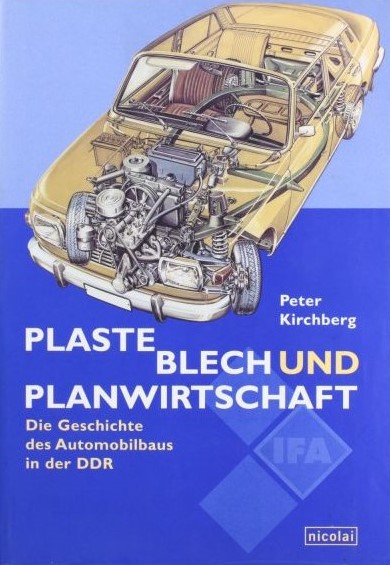
From what we read about the technical development from F8 to F9, we know that the F8’s front axle construction was too weak and small for the new 27hp engine and its inline mounted four-speed gearbox. The F8’s cable brake system also needed to be completely renewed and changed to a hydraulic operated system in order to make it more powerful, especially in the front axle. These changes were implemented in the war-time Werner car and the pre-series F9 from 1948 were also supposedly equipped with all these updates. For the project my thought was to obtain a chassis as shown in the IFA F9 parts list from 12/1951.

1. Chassis. After extensive searching and consulting with my German DKW-enthusiasts, it became obvious that it would be impossible to find a vehicle frame as shown in parts list 12/1951 and I would need to fabricate one. From careful study of the chassis-picture shown in the 'DKW F9 Technical Description', issued 1948 by IFA in Chemnitz, the IFA F9 vehicle frame from 1954 seemed to be the most similar, so I obtained a vehicle frame from a 1954 car and then rebuilt according to the picture of chassis in the 1948 DKW-brochure and the 1951 F9 parts list from Zwickau.

To recreate the early bracket mounting for the front leaf spring I used one from an F8, but mounted in reverse to the driving direction. It was essential to be sure before starting that the F9 gearbox could pass between the two side parts of the F8 spring bracket. As revealed in the photos, this was possible, but it's a very tight fit with only a few millimeters distance between gearbox and spring bracket frame. We will encounter many more occasions of very tight clearances around the front axle and engine throughout the project.

2. Wishbones and Shock Absorbers. In order to be able to withstand the heavier weight and loadings, the wishbone triangle arms of F9 were set wider than the F8, but initially only one arm of the triangle was changed, the other still being the same part as in the F8. The same asymmetric form of the wishbone was also used in western Germany in all F89Ps and the F91 until 1955, however, from the beginning in 1950 these were equipped with silent block bearings and with different shock absorbers. The asymmetric wishbone from Zwickau in eastern Germany was still equipped with brass bushing as in the F8 even though this form of construction was already out-of-date in 1950. Possibly this, and the use of new shock absorbers, was one of the reasons why Zwickau quickly gave up using the asymmetric form of the wishbones.

The car's telescopic shock absorbers were originally manufactured in Schweinfurt in western Germany by FICHTEL and SACHS for the KdF-beetle and were no longer available in eastern Germany after 1951. I once saw one of these early Tu26 shock absorbers stamped with the mark 'IFA' on it, handmade with brass solderings, so clearly they reproduced them in Zwickau on their own after 1951. Due to the extreme rarity of these shock absorbers, only very few DKW-enthusiasts know about these technical details.

3. Brakes. The 1948 IFA brochure still showed wire operated mechanical brakes, but it was easy to use the complete wheel brake sets from the DKW F89P for my F9. The main brake cylinder is a newly produced spare-part for the Mercedes-Benz Type 170 (1948–1952), which fits exactly into the F9 chassis without having to change any mounting details. The diameter of all brake cylinders for the IFA F9 and DKW F89P are the same - 25.4 millimeters.
Winfried Kuhl
For comparison - The 1951 IFA F9 Chassis (from the IFA spare parts list)

The 1956 IFA F9 Chassis (from the IFA repair guide)

You can see that the front axle mounts and wishbones are different in the later version.

Above is the chassis of the contemporary DKW F89P from 1954. The F89P was also derived from the DKW F8 and shares a common heritage, but there are lots of different details.
The IFA F9 Project Part One - https://dkwautounionproject.blogspot.com/2021/08/1948-ifa-f9-replica-project.html
The IFA F9 Project Part Two. The Engine - https://dkwautounionproject.blogspot.com/2021/09/1948-ifa-f9-replica-project-part-two.html
The IFA F9 Project Part Four - The Body - https://dkwautounionproject.blogspot.com/2021/11/1948-ifa-f9-project-part-four-body.html
Development of the IFA F9 - https://dkwautounionproject.blogspot.com/2020/07/the-development-of-ifa-f9.html
1953 Overview of the development of the IFA F9 - https://dkwautounionproject.blogspot.com/2021/09/1953-deutsche-und-auslander.html
1954 IFA F9 Ersatzteilelist - https://dkwautounionproject.blogspot.com/2021/12/1954-ifa-f9-ersatzteilelist.html











